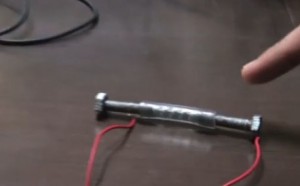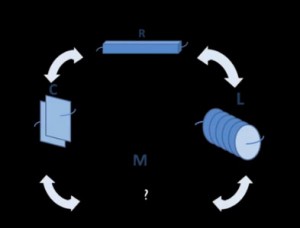Memristors—Circuit to Flip the Hardware Industry?
-
-
slice.mit.edu
- 2
Filed Under
Recommended

Aggarwal was so excited about this concept that he teamed up with a friend, Gaurav Gandhi, to form an organization called mLabs and they created a simple memristor that could be used in electrical engineering higher education, as part of the group's mission to "get kids and young students interested in science and technology." The simple device is made of metallic balls, screws, and a vinyl tube.
"Till now people have been talking of building better computer architectures, better circuits, and even emulating the brain using memristors," he says. "Now, they can actually implement these and test their hypotheses. Our research brings memristor in the reach of everyone: scientists, students, and hobbyists. The availability of this component, cheap and easy to build, will encourage many to explore it and build new applications."

So, what is a memristor?
First envisioned in 1971, part of Wikipedia's definition is a memory resistor or memristor, the "oldest known circuit element with its effects predating the resistor, capacitor, and inductor." An HP team first observed it in 2008—and expectations have been heating up ever since. MLab's short video illustrates the concept and explains how to build a one, devised with imperfect metal point contacts.
What are possible uses for memristors?
"One of the most prevalent applications of memristors is design of highly dense memories," says Aggarwal. "They are slated to replace flash memories in due course. Apart from this, they can be used to build highly efficient computer architectures (including cross bar architecture) and research shows that they can be used to emulate the neuron and thus the brain. Since the component was first observed very recently, in 2008, it is a hot field of research with new applications coming out every day."
Memristors are not really new, says Aggarwal. "We find that the simplest implementation of memristor existed 100 years back and was actively used by radio scientists. It was then called the coherer. It got lost with the invention of vaccuum tube. This helps us see the history of science from a new correcting standpoint. Well, history does repeat itself!"








Comments
alkathy mahmoud
Mon, 08/12/2013 10:32pm
Memristor is one of the new circut which dependent on the change between voltage with flux and this memory is charecter by high value of capacitance,so this property will lead to made the researcher to devlop this types of Memristor and invated new application for the future
mp2013
Thu, 07/18/2013 5:09am
The naive belief that non-volatile memristor/memristive systems might exist in physical reality is only based on HP’s fabled memristor model which was presented in 2008 in the “NATURE” paper “The missing memristor found” (Nature 453, 80-83 (2008)). Despite of the following hype which has sometimes obscured reasonable thinking, it must now be clear that HP’s “physical” memristor model suffers from severe flaws in its construction. HP Labs have not invented or found a device which works like a genuine memristor device. The “memristor” claims are misleading when viewed from the perspective of electrochemistry: one cannot derive the characteristic dynamical state equations of a genuine, non-volatile memristor on base of HP’s ion drift model. The critique can be found in the paper “Fundamental Issues and Problems in the Realization of Memristors” by P. Meuffels and R. Soni ( http://arxiv.org/abs/1207.7319 ).